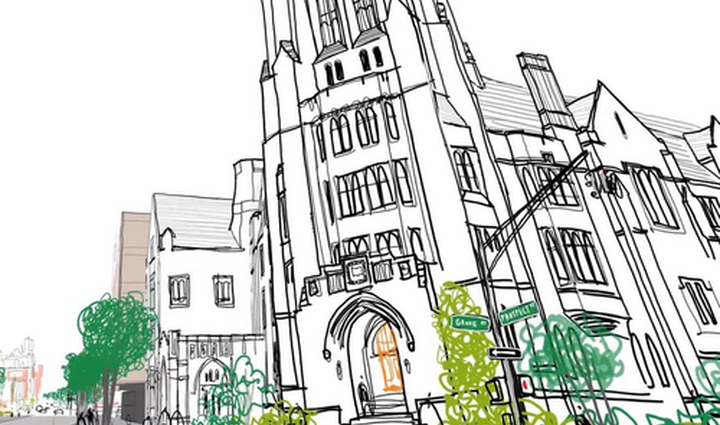Q&A with Julie Dorsey: Yale Faculty Founder of Mental Canvas
Julie Dorsey is a Computer Science professor at Yale and the founder of Mental Canvas, a software company that is developing a new class of graphical-media-design system that lies between 2D drawing and 3D computer-aided design.

The Mental Canvas technology was used in an animated spatial sketch of the coming new building for the Tsai Center for Innovative Thinking at Yale (Tsai CITY). Below, Julie talks about her vision, her process and encouraging innovative thinking in students.
1. Tell me why you designed Mental Canvas – what was the vision?
Drawing is an incomparable aid to visual understanding, discovery and communication. While computer technology has revolutionized writing, photography and music, drawing has largely remained unchanged. If the bar for digital drawing is set at merely simulating pen and pencil on paper there is no reason for creatives to move from their sketchbooks to their tablets. My vision for Mental Canvas is to elevate digital drawing with new capabilities and efficiencies such that it becomes the preferred starting place for the creative process.
Mental Canvas is a technology that sits between traditional 2D ink and 3D modeling. It frees sketching from the limitations of pen and paper, and it breathes new life into drawing by providing a context where strokes and canvases are dynamic. These dynamic drawings can give the appearance of a 3D sketch, an animation, or both, but without the tedium and rigidity of either. Simply put, Mental Canvas picks up where drawing on paper peters out.
2. Do students in your classes have the opportunity to design similarly cool things?
All of my classes – from freshman seminars to advanced undergraduate and graduate courses – culminate in a substantial independent project. I encourage students to be creative and ambitious and explore connections with their interests beyond Computer Science. I am continually amazed by what even beginning CS students create in my classes.
3. Can anyone use Mental Canvas? What are some of its current uses?
Mental Canvas is appropriate for anyone who sketches as a regular part of their workflow. That covers a lot of territory. The applications are surprisingly wide ranging – from architecture to theme-park and ride design to movie storyboards to product design to scientific illustration.
4. Why are you excited to work with Tsai CITY?
As the old Apple slogan goes, “Think Different.” Innovative thinking is fundamental to a liberal arts education, whether you’re majoring in architecture or engineering or philosophy. I am excited about the prospect of a center that fosters this important skill located so close to Computer Science and other Engineering Departments and the maker culture and facilities of the CEID.
5. What’s something about Yale you wish more people knew?
Nine years ago, my colleagues and I created a new major, Computing and the Arts, an interdepartmental major that combines an in-depth study of computer science with the study of one of five arts disciplines: architecture, art, history of art, music, or theater studies. The major is rapidly growing in popularity, boasts an amazingly diverse student body, and serves as a new model for STEM education.